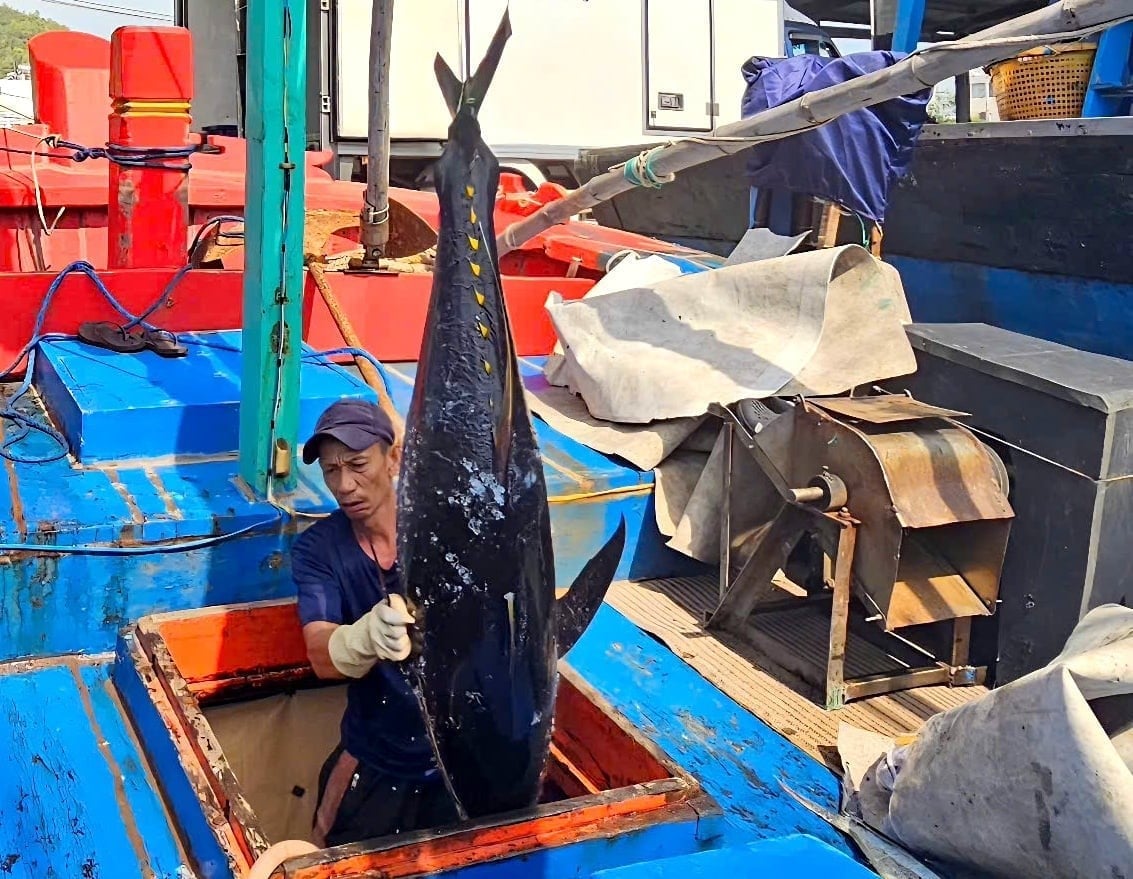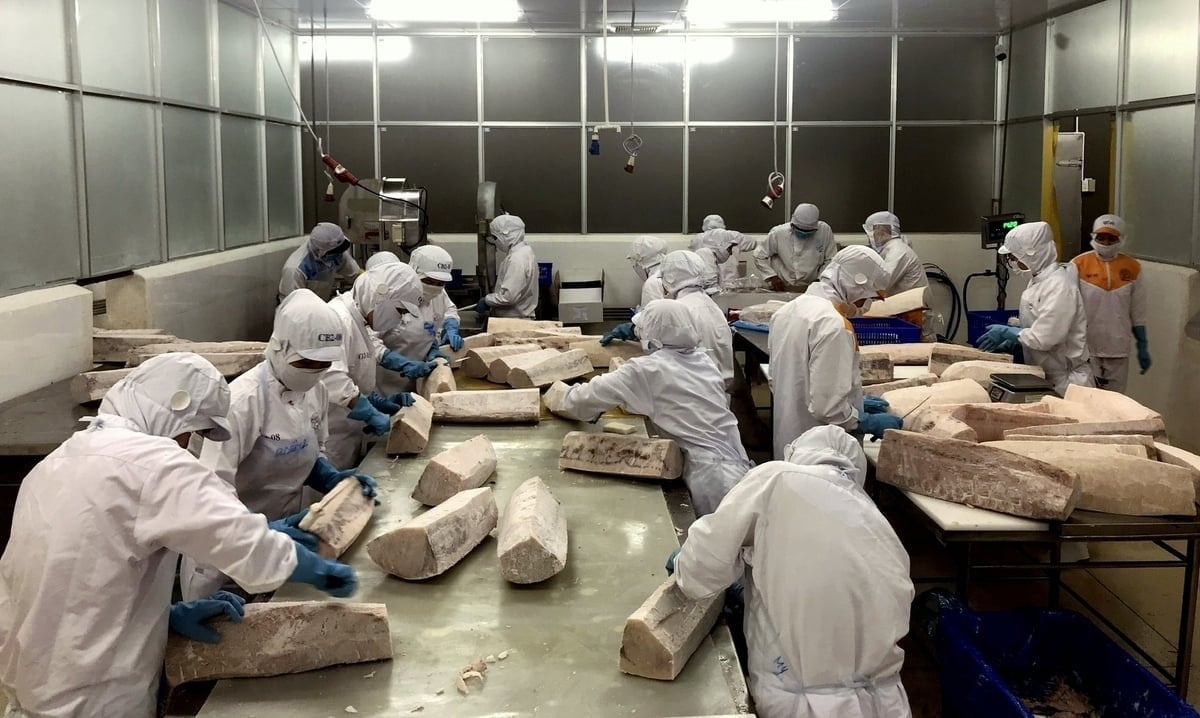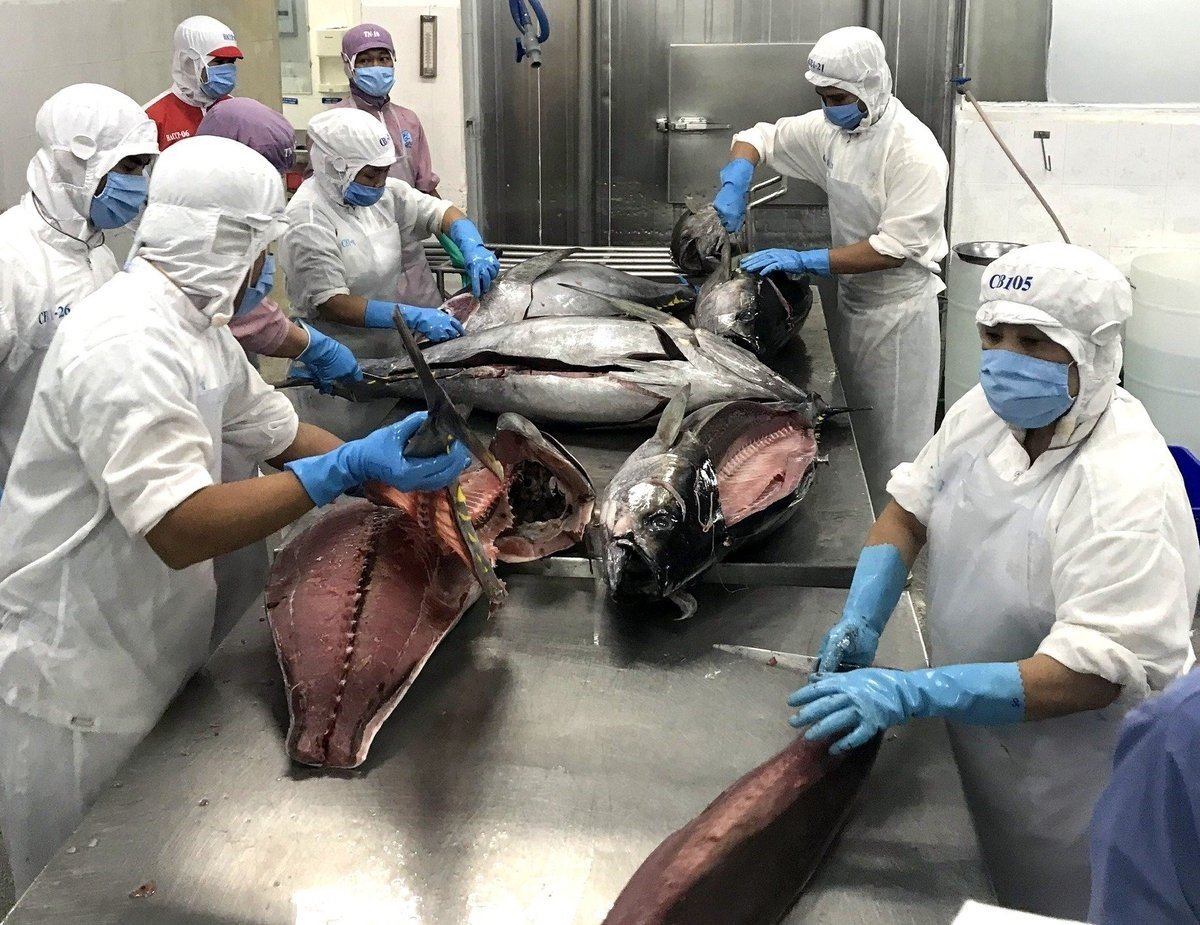December 6, 2025 | 20:10 GMT +7
December 6, 2025 | 20:10 GMT +7
Hotline: 0913.378.918
December 6, 2025 | 20:10 GMT +7
Hotline: 0913.378.918
Khanh Hoa is known as one of Vietnam's provinces with strong advantages in aquaculture, fishing, processing, and seafood exports. With 64 processing and production facilities certified by the Ministry of Agriculture and Environment and products present in 64 international markets, the province has affirmed its solid position. Seafood exports consistently account for a significant proportion, ranging from 35% to 44% of the province's total export value, thereby placing Khanh Hoa among the top five localities nationwide.

Khanh Hoa is one of the provinces specializing in ocean tuna fishing. Photo: Kim So.
According to the Khanh Hoa Department of Industry and Trade, the export market in the first seven months of 2025 experienced fluctuations and challenges due to global factors such as conflicts in the Middle East, the Russia–Ukraine war, and foreign partners' tariff policies, which have affected market access for local products.
Nevertheless, Khanh Hoa's seafood industry still achieved encouraging export growth. The province's total export turnover in the first seven months of 2025 exceeded USD 1.539 billion, up 15.83% compared to the same period. Seafood exports alone reached 71,670 tons, worth over USD 488 million, marking a 2.9% increase in value.
According to the Khanh Hoa Department of Industry and Trade, local enterprises have made great contributions to this success. Key businesses such as Hai Vuong Group (specializing in frozen fish, particularly tuna), Nha Trang Seafoods F17 JSC (frozen shrimp), Thong Thuan Cam Ranh Seafood JSC, Tin Thinh Co., Ltd., and Thinh Hung Co., Ltd. have maintained high output and export value, contributing to the province's economic stability.
However, the road ahead remains challenging for Khanh Hoa's seafood industry. The U.S.’s imposition of a 20% reciprocal tariff is expected to have direct and far-reaching impacts on the production and import-export activities of local enterprises.
This tariff rate drives up product prices, forcing businesses to reduce selling prices to remain competitive, which in turn leads to a decline in profit margins. This situation also causes difficulty in seeking new orders and directly affects employment for local workers.

Workers process seafood for export markets. Photo: Kim So.
To boost export activities, Mr. Ho Xuan Ninh, Director of the Department of Industry and Trade, said the department is focusing on accelerating administrative reforms, creating a transparent and healthy competitive environment, and providing enterprises with timely updates on policies and market developments. It is also working to expand and develop export markets to ensure sustainable long-term growth.
In addition, the department pays attention to developing production to secure a sustainable supply for exports and improving product quality; enhancing logistics services that support import–export activities; and strengthening state management in organizing trade operations to facilitate commerce, prevent commercial fraud, and promote fair trade. Notably, the department is also guiding businesses to maximize the benefits of free trade agreements (FTAs) and to step up cross-border e-commerce.
According to Mr. Ninh, to adapt and minimize losses, the Khanh Hoa Department of Industry and Trade recommends that local enterprises implement specific strategies.

In recent years, seafood exports have consistently accounted for a significant proportion of Khanh Hoa's export turnover. Photo: Kim So.
First, enterprises need to diversify export markets, avoiding dependence on a single market. They should effectively leverage traditional and key markets while also tapping into niche markets and expanding to new potential markets.
Second, it is essential to improve product quality, ensuring that products not only meet technical standards but also comply with labor and environmental requirements set by export markets. This will enhance competitiveness and reduce the risk of facing trade defense measures.
Third, businesses must stay proactive in updating market information and investing in technological innovation to maintain stable production while also strengthening their capacity to respond to foreign trade defense measures.
These efforts will not only help Khanh Hoa's seafood industry overcome immediate challenges but also lay a solid foundation for sustainable development in the future.
According to the Khanh Hoa Department of Industry and Trade, the province aims for seafood export turnover to reach an estimated USD 880 million by the end of 2025, up 4% compared to the same period last year. This will contribute to achieving the province's overall export target for 2025, representing an increase of 8.7% compared to the same period last year.
Translated by Thu Huyen

(VAN) Despite numerous challenges, Vietnam's key seafood products are maintaining strong momentum, setting the stage for full-year exports to potentially reach USD 11 billion.

(VAN) The signing of a protocol between Viet Nam and China on the export of fresh jackfruit represents a significant milestone in agricultural trade cooperation between the two countries.

(VAN) On November 27, the Ninh Binh Department of Agriculture and Environment and the Institute for Green Growth Research organized a training course on greenhouse gas inventory for businesses.

(VAN) China’s cooking oil is suddenly flooding into India. It all comes down to a soybean surplus that Beijing doesn’t quite know what to do with.

(VAN) An Giang promotes supply-demand connections, standardizes quality and builds value chains, creating a foundation for sustainable bird’s nest development and aiming to expand exports.
/2025/11/24/5339-4-nongnghiep-075331.jpg)
(VAN) Recently, the conference on 'Sustainable Fisheries Linkage Chain - Tilapia for Export' took place in Tien Hai commune, Hung Yen province.
/2025/11/21/4309-2-153400_128.jpg)
(VAN) Green and low-emission rice is paving the way for Vietnamese rice to enter high-end markets, marking the beginning of a transformation journey toward greening and elevating the national rice brand.